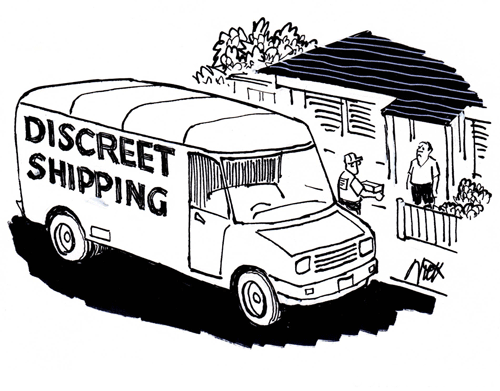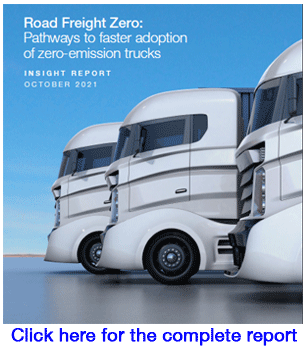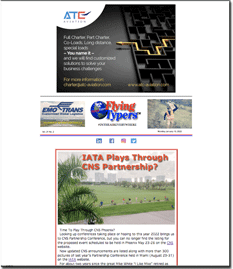

#INTHEAIREVERYWHERE
| |
 |
 #INTHEAIREVERYWHERE |
| Vol. 21 No. 5 | Tuesday
January 25,
2022 |
| |
Before you Google to ogle, think about the implications of balancing a woman on top of a skyscraper like a Christmas ornament. Lady Liberty she ain't. The latest ad from Emirates features a flight attendant standing atop the almost 3,000-foot Burj Khalifa in Dubai—the tallest skyscraper in the world. Given the context of an ongoing pandemic and the resultant travel woes that have arisen (A recent American Airlines flight from Florida to London that had to return because ONE traveler refused to wear their mask—talk about "you better pipe down back there, or I'm turning this car around!"), one can only hope that most flight attendants do not have to teeter atop the needle point of a skyscraper to earn their keep. SSA |
Just before it all shuts down with another giant migration home as The Lunar New Year celebration begins one week from tomorrow (February 1), what lies ahead for China?  With
a massively indebted and failing real estate sector and uncertainty of elections
later this year, China:
An Economic and Political Outlook for 2022 – Domestic Political Reaction
to China’s Economic Slowdown is a must read from New York’s
Asia Society Policy Institute (ASPI) President and CEO Hon. Kevin Rudd. With
a massively indebted and failing real estate sector and uncertainty of elections
later this year, China:
An Economic and Political Outlook for 2022 – Domestic Political Reaction
to China’s Economic Slowdown is a must read from New York’s
Asia Society Policy Institute (ASPI) President and CEO Hon. Kevin Rudd.Mr. Rudd is also a former Prime Minister of Australia. As the factories shut down across China and satellites overhead can once again see the ground through clearing pollution, inter-city highways are jammed with people going home for this most treasured holiday time. “No doubt in recent years,” says Kevin Rudd, “XI Jinping has taken China to the “left” politically and economically, but to the “right” with his deeply nationalist narratives at home and a more assertive foreign and security policy abroad. “More recently, this has contributed to a slowdown in the Chinese economy and an increase in the level of political and policy reaction against Xi’s anti-market measures. “Now, with last month’s Central Economic Work Conference, the Communist Party appears to have now acknowledged a number of Xi’s measures have indeed gone too far, especially as Xi himself seeks to maximize economic stability ahead of his bid for reappointment to another term in office at the 20th Party Congress this November. But whether these corrective measures will be enough to restore economic growth in the short term given the Chinese private sector is now “once bitten, twice shy” is another question altogether.” In China: An Economic and Political Outlook for 2022 – Domestic Political Reaction to China’s Economic Slowdown Asia Society Policy Institute (ASPI) President and CEO Kevin Rudd tackles these questions and provides an analysis of how China’s economic challenges are likely to shape its politics and policies in the year ahead. GDA |
 |
Air cargo back to work this week in U.S. taking stock and facing what is next, now that The Airforwarders Association AirCargo 2022 is in the books. Early reviews seem positive for the first industry event of the year and the biggest gathering anywhere in two years, drawing praise from folks we talked to up and down the line. For some you get the feeling that the AC 2022 experience was a bracing wake up, a slap in the face with a velvet glove “Thanks—I needed that!” air cargo smiled. Donna Mullins, Vice President, Kale Info Solutions, (USA) a subsidiary of Kale Logistics Solutions is about breaking down barriers and finding new roads. “Congestion is the combination of multiple inefficiencies at varying stages of the cargo move to its destination. “We have to mentally prepare for business changes,” Donna declared. “Jennifer Coulter-Lissman of TOC Logistics International, Inc. reminded us that we have to “take knowledge back to our staff.” Taking this knowledge back does help industry stakeholders to emotionally prepare, as Dan Muscatello said, “Not only doing things differently, but also doing different things.” “As I shared with the conference attendees,” Donna said, "we can all make small changes to accomplish great things. “As every link in the chain makes small improvements to strength their section, the chain will become more efficient. “Air cargo is predicated to increase 5% year over year for the next 5 to 10 years, that’s a 25%-50% increase in cargo capacity on an already over stressed air cargo community. “Doing nothing would create a backlog and delay in a way that, well, could be 25%-50% worse than what we are currently experiencing. “No single stakeholder needs to make drastic process or procedural changes to increase efficiencies in air cargo transportation. “Some good suggestions were made by the panel on how the stakeholders can work closer as a community,” Donna said. “If you’ll forgive the pun, 'We are family'. We are connected, like it or not, to each other. “Service is provided by some stakeholders to other stakeholders, but no billings are done. “One area where Kale Info Solutions can help, is bringing communication to the air cargo family with our patented and proven Air Cargo Community Systems. “We provide solutions for the movement on the information of the cargo. “Airlines, brokers, forwarders, handlers, and truckers move the cargo and documentation; Kale’s ACS Truck Slot Management moves information on the status of the cargo’s movement and allows the handlers and truckers to coordinate the exchange of the cargo in less time with real-time updates of the dock-in, POD/warehouse acceptance, and dock-out. Having this visibility gives the stakeholders the ability to better service the shipper and consignee as well,” Donna said. |
|
|
The old, fashioned curtains
and rails (C&R) set up for the trade show booths at AirCargo 2022
in New Orleans were simple and attractive with fresh and eager faces shining
out in front of them last week. |
 |
Moving road freight at the speed of zeroemission truck adoption is feasible, but requires coordinated action to overcome tough challenges. Holding the line and lowering the temperature 1.5 C by 2050 in Europe, is one goal that could be helped eliminating that rumble out there right under your window as streams of trucks jammed up and jelly tight, roll on powered by fossil fuel. When it comes to going green from the waste basket to the warehouse to the highway, to the airplane, everybody it seems has some kind of plan. if not much more than a stated one as that 2050 1.5 degree drop deadline approaches. Of course we all know if we are not delivered to the promised land in 50 years the goal posts will most probably be moved unless they are under water somewhere. Well just in time for that part of the year known in baseball as “the hot stove league,” this late January might be some good and informative reading.  A new report, Road
Freight Zero: Pathways to faster adoption of zero-emission trucks,
is a joint publication by World Ecomonic Forum and McKinsey that describes
how the RFZ initiative can help countries reach their emissions goals. This
report draws on a large body of modeling, research, and direct RFZ-partner
engagement, including multiple workshops with more than 40 companies, a
dedicated survey to assess barriers and solution pathways, numerous deep-structured
interviews with RFZ partners to analyze specific archetypes of ZE truck
adoption, and quantitative use-case modeling.
A new report, Road
Freight Zero: Pathways to faster adoption of zero-emission trucks,
is a joint publication by World Ecomonic Forum and McKinsey that describes
how the RFZ initiative can help countries reach their emissions goals. This
report draws on a large body of modeling, research, and direct RFZ-partner
engagement, including multiple workshops with more than 40 companies, a
dedicated survey to assess barriers and solution pathways, numerous deep-structured
interviews with RFZ partners to analyze specific archetypes of ZE truck
adoption, and quantitative use-case modeling.For the record, McKinsey & Company is a management consulting firm, founded in 1926 by University of Chicago professor James O. McKinsey, that advises on strategic management to corporations, governments, and other organizations. It has consistently been recognized by Vault as the most prestigious consulting firm in the world. Meantime acknowledging major truck-driven air pollution reductions will be needed across all forms of transport, and right now the industry is awaiting more cost-effective and higher-performing batteries and improved fuel-cell technology. No doubt, zeroemission (ZE) trucks from people like Elon Musk, and other advancements including improved infrastructure are coming closer into view, signaling that indeed a low-carbon truck future is well within reach. But don’t hold your breath. In isolation without help, it is generally believed these hoped for technological improvements will not be broad enough to scale deployment in line with global climate goals by 2050, and despite all the best hopes of mankind, will not meet as example EU Green Deal objectives any time in the immediate future. In addition to several better mouse traps that will need to be funded, developed, coordinated and built, the entire value chain will need to be synchronized with large-scaled fleets with infrastructure and transport demand, truck deployment and infrastructure build-out. The Road Freight Zero (RFZ) community is addressing challenges related to infrastructure, capital financing and more. Looking at the numerous pilots underway, the decarbonization goals set by transport buyers, the product pipelines of truck makers and recent policy announcements, indicate that the industry appears to be on the cusp of significant progress. The engagement, energy and dedication of the RFZ community has been inspiring. The 36-page report captures some key findings about what it will take to accelerate ZE truck transport. Road freight currently generates 15% of European CO2 emissions. About 70% of those emissions come from medium- and heavy-duty trucking (MDT/HDT) – the hardest-to-abate segments. The report suggests that there is a growing consensus that the (ZE) truck industry is on course to deliver competitive business cases for the decarbonization of these fleets – through battery electric vehicles (BEVs) and hydrogen fuel cell electric vehicles (FCEVs) that could eventually be powered by renewable energy. Some modelling suggests that by 2030, 37% of new MDT and HDT sales could be zero-emission in Europe, corresponding to around 150,000 vehicles. But, at current pace, the industry would need another 120,000 ZE trucks on the road annually by 2030 to achieve the 1.5°C target—equivalent to two thirds of total trucks sold. GDA |
If
You Missed Any Of The Previous 3 Issues Of FlyingTypers Access complete issue by clicking on issue icon or Access specific articles by clicking on article title |
||
 Vol. 21 No. 2 IATA Plays Through CNS FIATA First Electronic President Chuckles for January 10, 2022 American's Iconic Hangar 1 Bites The Dust |
|
|
Publisher-Geoffrey Arend
• Managing Editor-Flossie Arend • Editor Emeritus-Richard
Malkin Film Editor-Ralph Arend • Special Assignments-Sabiha Arend, Emily Arend |
Send comments and news to geoffrey@aircargonews.com
|